
At least 95 people have been killed by severe flash floods in Spain, according to authorities on Wednesday, as emergency responders scramble to find dozens of missing people.
In the worst affected region of Valencia, 92 people were killed, according to Angel Victor Torres, Spain’s minister of territorial policy and democratic memory. Two others died in Castile-La-Mancha, and one person in Andalusia.
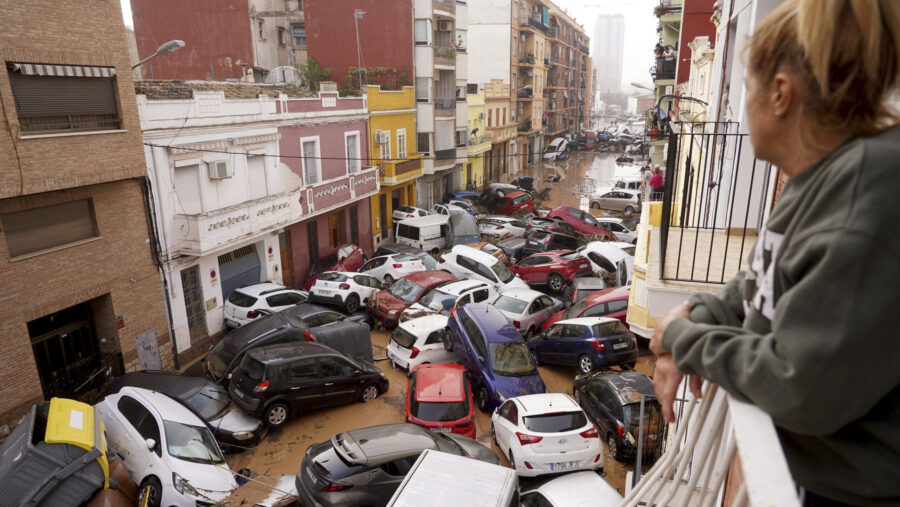
Several locations in southern and eastern Spain were hit with up to 12 inches of rain in just a few hours on Tuesday, in what marked the worst rainfall in Valencia in 28 years, according to state weather agency AEMET.
Emergency services in Valencia, the city of Malaga, and Castile-La-Mancha, among other regions, said they were still working on finding dozens of missing people.
Emiliano García-Page, president of Castile-La-Mancha’s regional government, compared the deluge to a levee breaking. “It’s not a rain pour, it was like a dam burst,” García-Page told Spain’s national broadcaster TVE. “People were calling [emergency numbers] crying, asking for help and it was almost impossible to reach them.”
The badly-hit Valencia region was thrown into a state of chaos, with most highways becoming completely unusable on Tuesday night and Wednesday morning. Vehicles that had been left abandoned in traffic were picked up by the water and moved around..

A courthouse was turned into a temporary morgue in the regional capital, also called Valencia, said local authorities, as the death toll is feared to climb.
At least 40 people, six of whom were in a retirement home, died in the town of Paiporta in Valencia, Spanish state news agency EFE reported, citing its mayor.
Videos posted by several rescue agencies on Wednesday show entire streets flooded, people stuck on rooftops and cars piled up and flipped over.
Around 1,200 people are thought to still be trapped in different parts of a highway in Valencia, and 5,000 vehicles are blocked as a result of the surging flood waters, EFE reported, citing Spain’s Guardia Civil.
Trains have been suspended in the Valencia region, as have other major public services in other affected regions. Schools, museums, and public libraries in the Valencia region will be closed on Thursday, according to the local government.
In Malaga, located in the Andalusia region, a 71-year-old British man died from hypothermia, according to the city’s mayor, Francisco de la Torre.

‘We don’t know where our parents are’
Survivors and family members of the missing spoke to TVE about the terrifying downpour. “It was agonizing. When we saw the water rising and reaching the first floor of the house we went to the roof,” one resident told TVE. “We stayed on the roof until 4 a.m. [11 p.m. ET Tuesday]. We didn’t have water, we were cold. Finally, the helicopter arrived.”
“Everything is destroyed, but at least we are here to tell [the story],” she added.
Petruta Sandu’s family was also caught off guard by the sudden flooding. She last spoke to her parents late on Tuesday night when they had been trapped on the roof of their car as waters rose around them.
“Since the 10 p.m. last night, we don’t know anything about our parents,” she told RTVE. “My brother-in-law walked almost 7 km [over 4 miles] through knee-deep water to find the helicopter and find the vehicle but they didn’t find anyone. We don’t know where our parents are.”
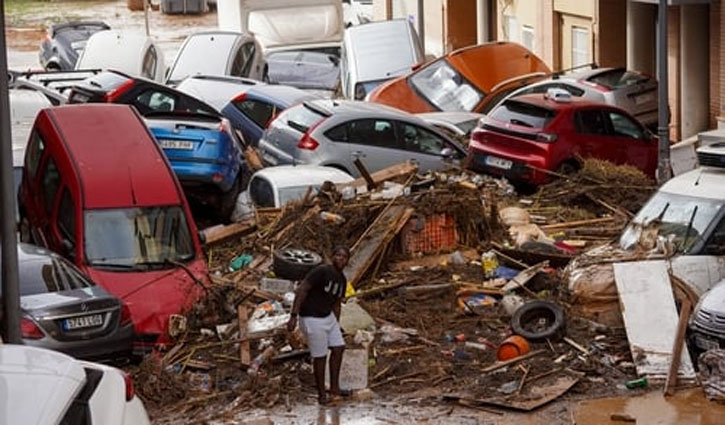
Heavy rainfall causes severe flash flooding in Spain
Dozens are dead in southeastern Spain, the regional government of Valencia said Wednesday, and areas of southwestern Spain will see the threat of heavy rain continue through the end of the week, according to Spain’s Meteorological Agency.

In towns close to rivers such as Utiel or Paiporta, water spilled onto the streets, CNN en Español reported. Vans, cars and garbage cans were swept away by currents that, in some cases, reached the first floor of buildings.
AEMET reports that the “cold drop” that caused the flooding is the worst Valencia has experienced this century, but adds that it is too early to tell if climate change is to blame. The term “cold drop” refers to a pool of cooler air high in the atmosphere, which can separate from the jet stream, causing it to move slowly and often lead to high-impact rainfall events. The phenomenon is most common in autumn.
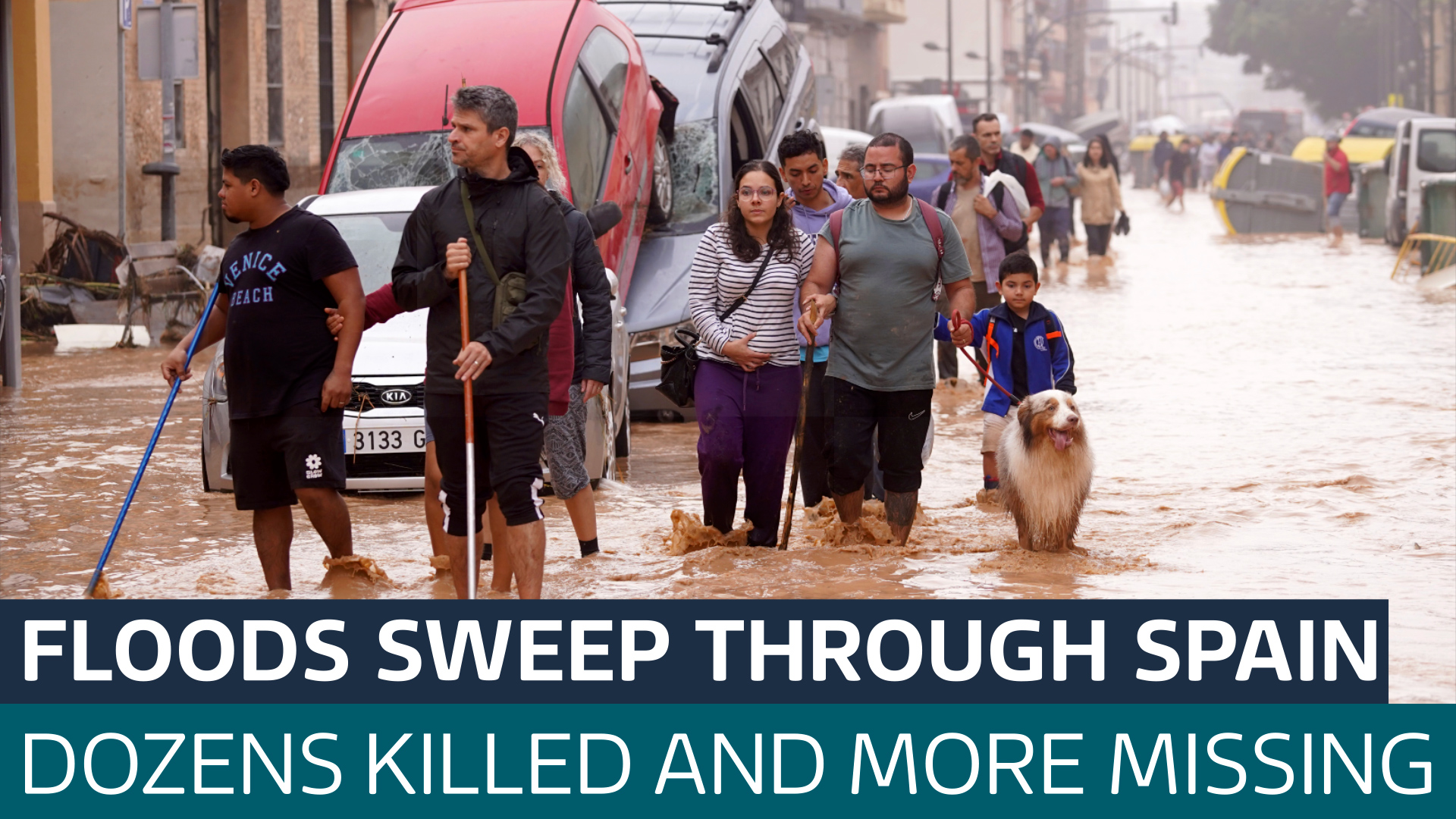
The sheer amount of rain that fell meant many were taken by surprise, with people finding themselves trapped in their basements or first floors and unable to get to safety.
Spanish Prime Minister Pedro Sanchez said on Wednesday that his government would use all means necessary to help victims of the floods, as he asked people to remain vigilant. He is set to visit Valencia on Thursday.
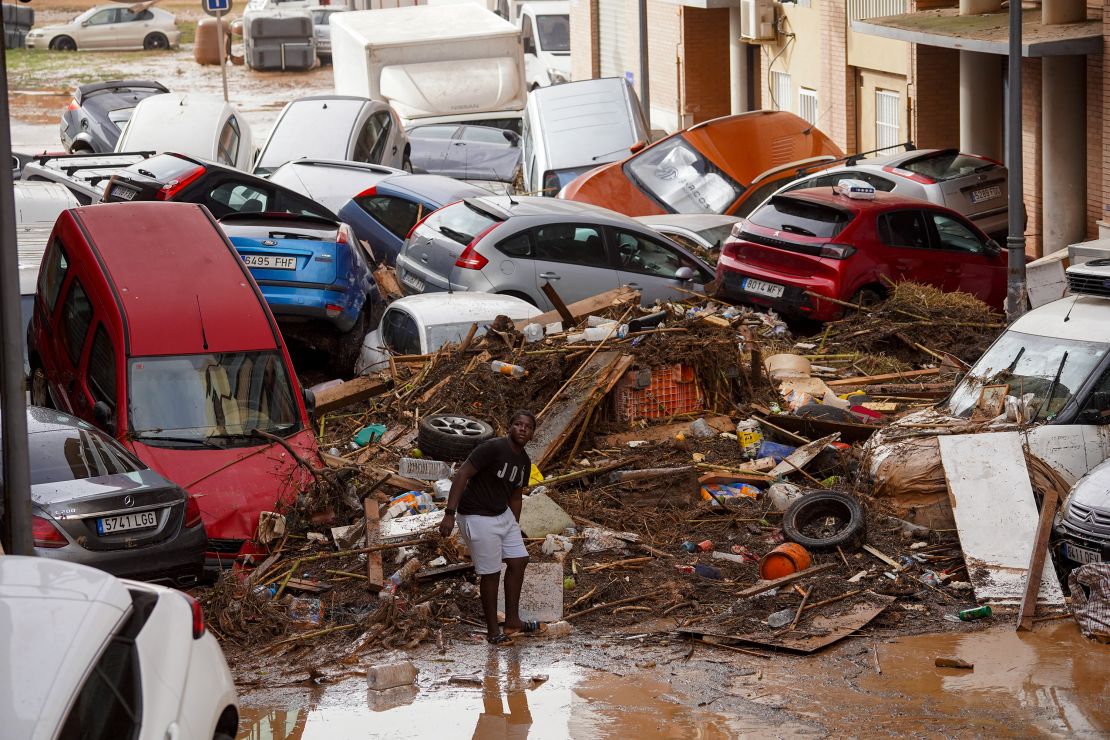
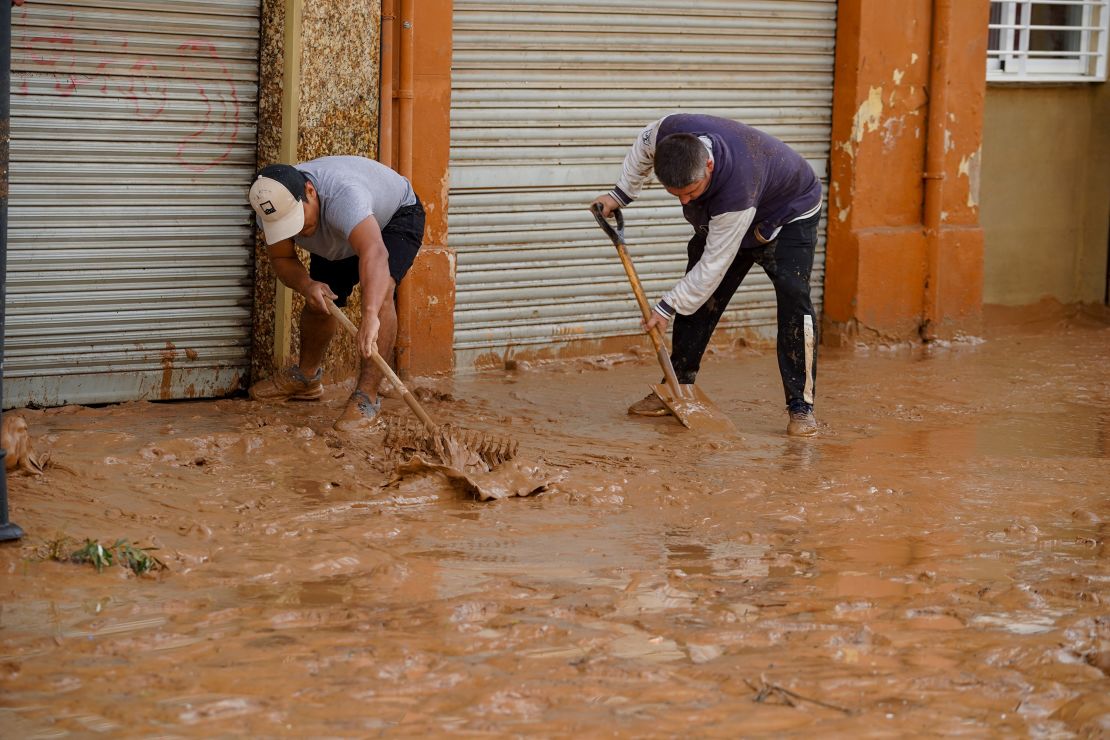
Spanish Defense Minister Margarita Robles described the flooding as an “unprecedented phenomenon,” CNN en Español reported. Robles said that more than 1,000 members of the military had been deployed to assist in rescue efforts.
The Spanish government has decreed three days of official mourning for victims of the flooding, starting on Thursday.
A local resident from one of the affected towns, Antonio Carmona, described to CNN what happened when the floods hit. “When we looked by here, we saw everything going down. (The water) took cars, it took down half of the house of one of our neighbors.”
Carmona pointed to his torn clothing, saying he and others had been saving dogs caught up in the flooding.
One woman named Beatriz Garrote was driving home from work in the city of Torrent in Valencia on Tuesday evening when she found herself trapped on a stretch of the ring road by the rising water for several hours alongside other drivers, according to Spanish newspaper El Pais.
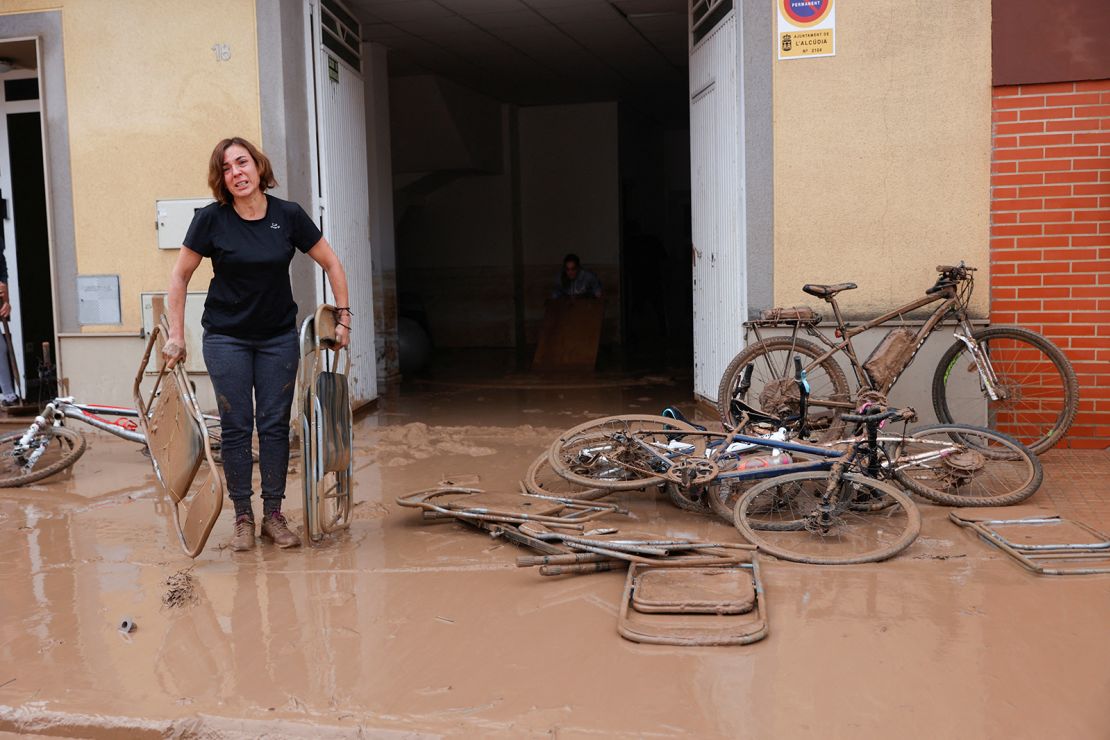
“I went past the first exit, which was for Paiporta, but it was closed because they told us that the town was flooded there and we couldn’t exit,” she said, El Pais reported. She said her car then got stuck “and suddenly the two lanes closest to the exit started flooding.”
She described feeling “very scared” as water levels rose rapidly. “I didn’t know where it was coming from or what was happening. The water started to rise very quickly.
“After 10 minutes, it was half way up the car’s wheel. One of the volunteers told us to turn the cars around but there was no possible exit.”
The human-caused climate crisis is making extreme weather more frequent and more severe, scientists say.
As the world warms due to fossil fuel pollution, the most intense rain events are getting heavier and more frequent. Hotter oceans fuel stronger storms and a warmer atmosphere can hold more moisture which it wrings out in the form of torrential rainfall.
Rainfall warnings continue through Wednesday for portions of eastern and southern Spain, according to Spain’s Meteorological Agency, AEMET, with the threat of heavy rain expected to continue through the end of the week.
This story has been updated with the latest developments.

Bodies found as severe flash flooding hits southern and eastern Spain
Several bodies have been found after parts of southern and eastern Spain were hit by severe flash flooding on Tuesday, with some locations receiving up to 12 inches of rain in just a few hours.
Footage from the city of Valencia showed mud-colored water flooding through the streets, tearing down walls and sweeping away parked cars.
Valencia’s regional leader Carlos Mazon told reporters early Wednesday that some bodies were found as rescue teams began to reach areas previously cut off by the floods.
“Unfortunately, we can confirm that some bodies have already been found, but out of respect for the families we are not going to give any more details,” Mazon said.
Spanish Prime Minister Pedro Sánchez said an unspecified number of people were missing due to the flooding and asked citizens to act with “great caution” and avoid moving around if it is not necessary.

The Spanish government set up a crisis committee on Tuesday, according to the Palace of La Moncloa. It will be chaired by Sánchez and, from Wednesday, will coordinate the work of the Civil Guard, the National Police, the General Directorate of Civil Protection and the Military Emergency Unit.
Extreme rain warnings were in effect on Tuesday for some areas including around Valencia, according to Spain’s Meteorological Agency, AEMET. These warnings called for the potential of 200 mm (8 inches) of rain in less than 12 hours.
In some locations, the rainfall estimates were exceeded in even shorter periods of time. Chiva, which is east of Valencia, received 320 mm of rain in just over four hours, according to the European Severe Weather Database. The Valencia area averages 77 mm (3.03 inches) for the entire month of October.
Flooding was also reported in and around the cities of Murcia and Malaga with more than 100 mm (4 inches) of rain falling in some areas.
A strong upper level low pressure is moving northward into the region from Africa. The strong system is bringing a significant amount of atmospheric instability to the region. Extreme amounts of rainfall are also being enhanced with moisture from the Mediterranean Sea and upslope flow into higher terrain which acts to squeeze out additional moisture.
Rainfall warnings continue through Wednesday for portions of eastern and southern Spain, according to AEMET. The warnings north of Valencia are for rainfall totals in excess of 100 mm (4 inches) and rainfall rates of 30 mm per hour (1.18 inches per hour).
Areas of southwestern Spain will see the threat of heavy rain continue through the end of the week.
What caused the deadly Spain floods and what does it mean for the UK?
More than 72 people have died in Spanish flash floods as a year’s rain fell in the space of eight hours in Valencia, in the deadliest flooding to hit the country since 1996.
Rescuers used dinghies to find survivors among the floodwaters, with the rain meaning that some areas became impossible to reach, according to local authorities.
More than 1,000 soldiers were deployed to areas such as Valencia and Malaga, with local reports suggesting a baby may be among the victims in the town of Torrent, and dozens of towns flooded, according to Spanish prime minister Pedro Sanchez.
“For those who are looking for their loved ones, all of Spain feels your pain,” Sandez said in a televised address.
“We mustn’t let our guard down because the weather front is still wreaking havoc and we can’t say that this devastating episode is over.”
Petrol station worker Denis Hlavaty told Reuters that he barely survived the floods inside the station – and that nearby people had had to climb onto their cars to survive.
Hlavaty said, “It’s a river that came through. The doors were torn away and I spent the night there, surrounded by water that was 2m deep. I stayed on the top of a shelf, the only one left as the whole gas station had disappeared.”
What caused the floods in Spain?
Some parts of Valencia such as the towns of Turis, Chiva or Bunol recorded more than 15in of rainfall – caused by a ‘gota fria’ or ‘cold drop’.
The New York Times explains that a ‘gota fria’ occurs when cold air collides with warmer air over the Mediterranean. This leads to extreme atmospheric instability.
Meteorologists believe that the warming of the Mediterranean, which increases water evaporation, plays a key role in making torrential rains more severe.
Ernesto Rodriguez Camino, senior state meteorologist and a member of the Spanish Meteorological Association said, “Events of this type, which used to occur many decades apart, are now becoming more frequent and their destructive capacity is greater.”
Does this mean anything for the UK?
The ‘gota fria’ is a localised weather system which is unlikely to have any direct effects on the UK.
The floods are evidence of how climate change is making weather more unpredictable – and making extreme events more likely.
Dr Jess Neumann, associate professor of hydrology at the University of Reading, told Yahoo News: “What we’re seeing with this changing climate, more chaotic weather.
“We have a warming atmosphere: we’ve seen about 1.1C of warming so far. And what that means is the atmosphere is able to hold more moisture. So what we’ve seen in Spain is cooler air moving over the Mediterranean, pulling up this moisture into the atmosphere.
“It’s making these big thunder clouds, which has deposited a huge amount of rain.
“Here in the UK, we obviously don’t have the Mediterranean Sea, but what we do have, particularly during the summer is intense thunderstorms that develop.
“Only a few weeks ago, I think it was around the 23rd of September, you know, we saw flash flooding across a reasonable chunk of the UK, and that,was caused by unstable atmospheric conditions.”
“Flash floods can affect anyone, anywhere. We take preparation for other hazards such as earthquakes and tsunami very seriously with education, drills, and emergency kits. It is time we afforded the same to flood risk preparedness.”
An unprecedented number of flood emergencies have ravaged the US. It’s a warning of what’s to come
The warnings are just one measure of how chaotic and devastating flooding has been so far this year. It has killed dozens of people, altered entire landscapes and cost the United States billions of dollars.
The most recent flash flood emergency unfolded in Roswell, New Mexico, last weekend. The desert city received about half a year’s worth of rain in just 24 hours. Roadways turned into raging rivers under the cover of darkness Saturday evening. Hundreds were trapped and rescued and at least two people were killed.
It was exactly the kind of extreme rainfall event scientists expect as the planet warms.
The most intense rain events are getting heavier and more frequent as the world warms due to fossil fuel pollution. A warmer atmosphere is capable of soaking up more moisture like a sponge and wringing it out in the form of gushing rainfall.
As a result, “we most definitely are” already seeing the consequences of climate change reflected in this year’s catastrophic flash flooding events, according to Astrid Caldas, a senior climate scientist with the Union of Concerned Scientists.
“Extreme rain events have been happening a lot more and are likely to continue to happen a lot more,” Caldas continued.
Development around waterways and in mountainous areas is also putting people in harm’s way and increasing the risk for catastrophic, life-threatening flooding disasters, Caldas, who specializes in community resilience, explained.
“It’s about where we build, how we change the natural ways of the water” Caldas said. “Water is always going to go the easiest way that it can, so the fact that we have built so much, particularly along the banks of rivers … that’s why flooding events are also increasing in the US.”
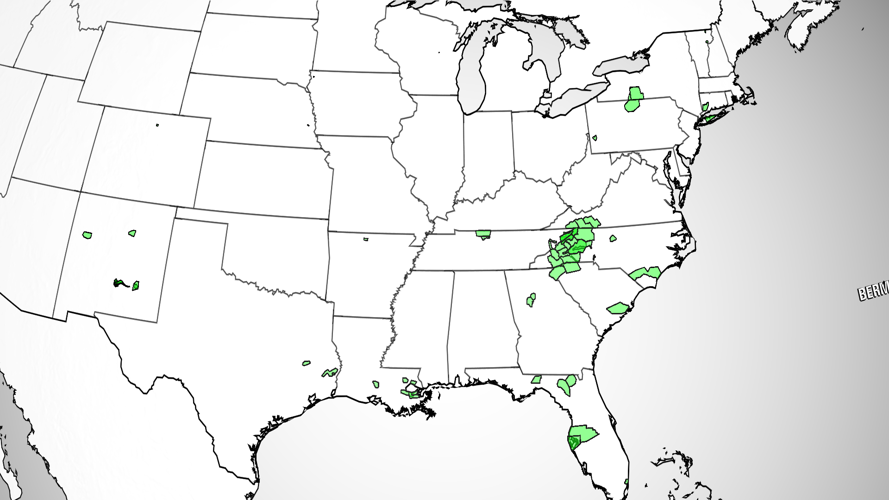
Tropical trouble
The final tally of flash flood emergencies fluctuates greatly year-to-year and is highly dependent on changing weather patterns and tropical systems that impact the US.
Tropical systems are fueled by an immense amount of moisture to begin with, which they often unleash in the form of some of the most intense possible bouts of rainfall.
That’s been the case this year. Rainfall from hurricanes Debby, Francine, Helene and Milton accounted for about half of all flash flood emergencies issued this year, according to a CNN review of archived warnings.
Helene dumped never-before-seen rainfall amounts of up to 30 inches in western North Carolina and caused catastrophic flood damage that left many locales unrecognizable.
Helene accounted for more than 30 flash flood emergencies on its own this year; there were 29 total flash flood emergencies last year.
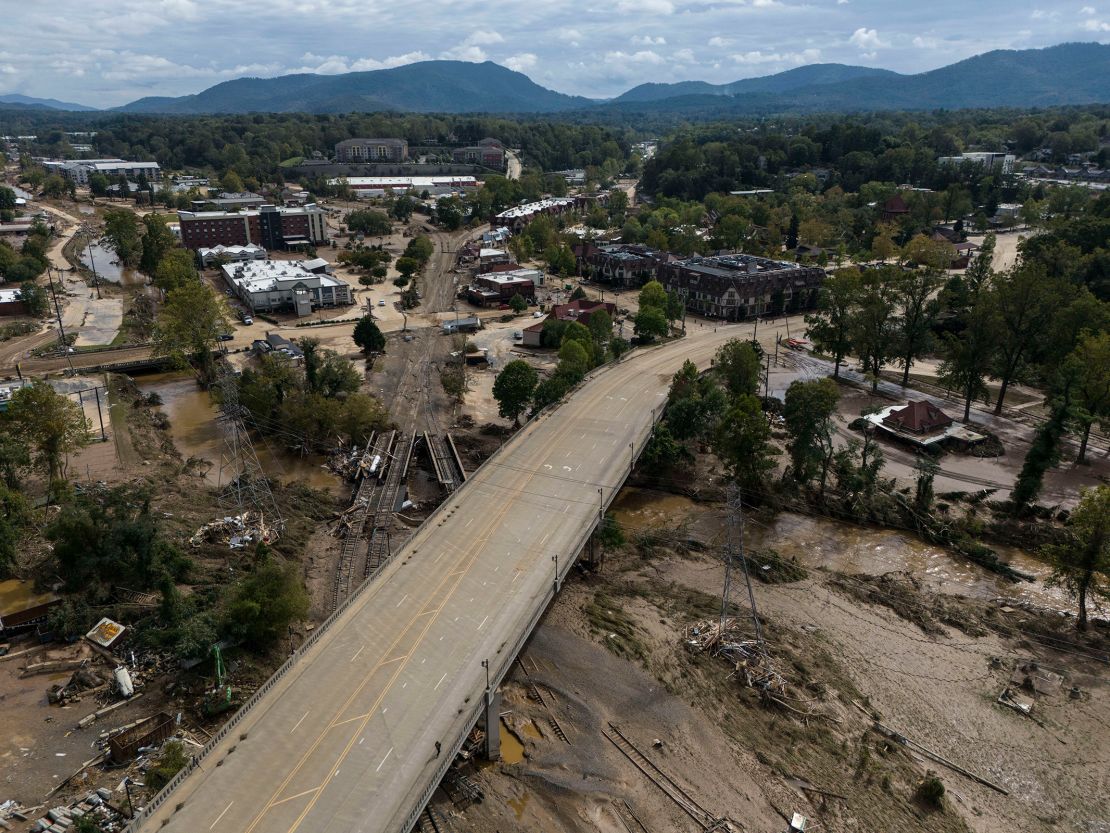
Like all heavy rain events, tropical systems are also being supercharged in a warming world.
They’re also getting an added boost from extremely warm bodies of water like the Gulf of Mexico which not only help them to rapidly intensify, but also inject additional moisture into the atmosphere.
Oceans are heating up as temperatures trend upward around the globe. The Gulf of Mexico spent a large portion of the summer and early fall at record-warm levels, acting like rocket fuel for tropical systems.
All of the hurricanes to hit the US this year were fueled by the Gulf.
Compounding disasters
Increasing extreme weather as result of climate change also helped to create a flood disaster.
The South Fork and Salt fires torched thousands of acres of southern New Mexico in the early summer, burned hundreds of homes and businesses and killed at least two people.
Heavy rain then pounded the scorched area not long thereafter and triggered multiple flash flood emergencies. Because the ashen soil, stripped of its ground cover, was less capable of absorbing rainfall, it became a raging river of water and debris that caused more damage.
This fire-to-flood disaster was just one varietal of dozens of such disasters this year.
All told, there have been at least 45 flood-related major disaster declarations this year, according to FEMA. And two dozen billion-dollar extreme weather disasters have already occurred in the US in 2024, CNN previously reported, a number that is straining FEMA’s disaster relief funding.
Flood-related disasters will only continue to increase as the atmosphere and oceans warm and combine to create a potent cocktail capable of creating a new normal.
“The past does not predict the future anymore,” Caldas warned.
CNN’s Ella Nilsen contributed to this report.











:max_bytes(150000):strip_icc():focal(750x357:752x359)/prince-william-princess-catherine-state-visit-president-republic-korea-2023-042825-8f4b6a5dfefc480fa98cf6c50346e387.jpg?w=1200&resize=1200,0&ssl=1)













:max_bytes(150000):strip_icc():focal(749x9:751x11)/alfonso-ribeiro-and-daughter-ava-051623-733bbb81bf864afe97f1ddbcc575e17c.jpg?w=1200&resize=1200,0&ssl=1)







:max_bytes(150000):strip_icc():focal(750x292:752x294):format(webp)/king-charles-prince-andrew-120125-1a-f46e7b16049c47358276e6a71d8ccd14.jpg?w=1200&resize=1200,0&ssl=1)







:max_bytes(150000):strip_icc():focal(734x384:736x386)/Donald-Trump-Tim-Walz-112825-2ecc0b4502ac4a0e95f57085b0cd8afe.jpg?w=1200&resize=1200,0&ssl=1)


:max_bytes(150000):strip_icc():focal(760x440:762x442)/ellen-degeneres-portia-de-rossi-the-unveiling-of-rh-san-francisco-the-gallery-032025-1-5c12c2f292b4446bb3b9009647b426bf.jpg?w=1200&resize=1200,0&ssl=1)